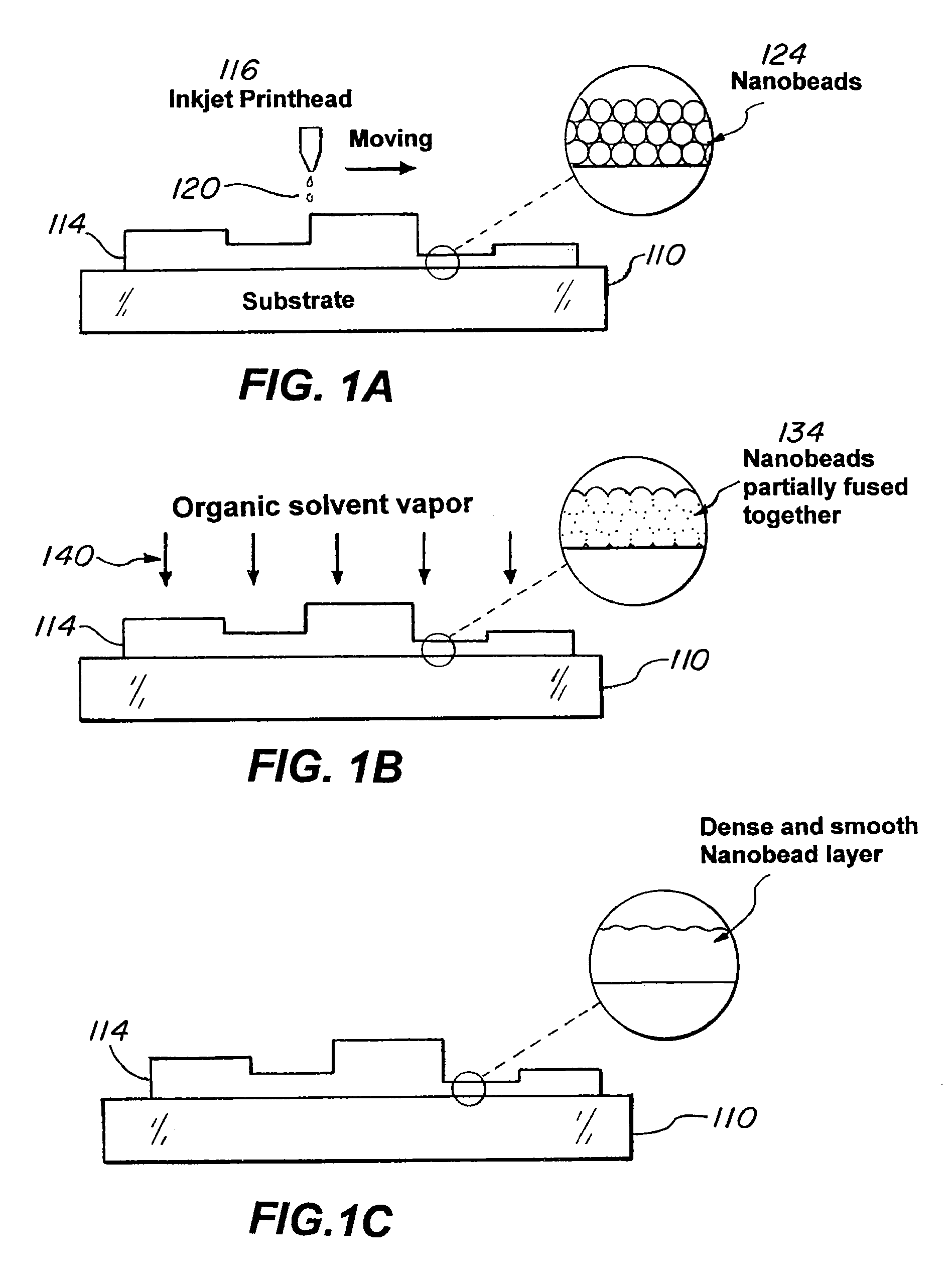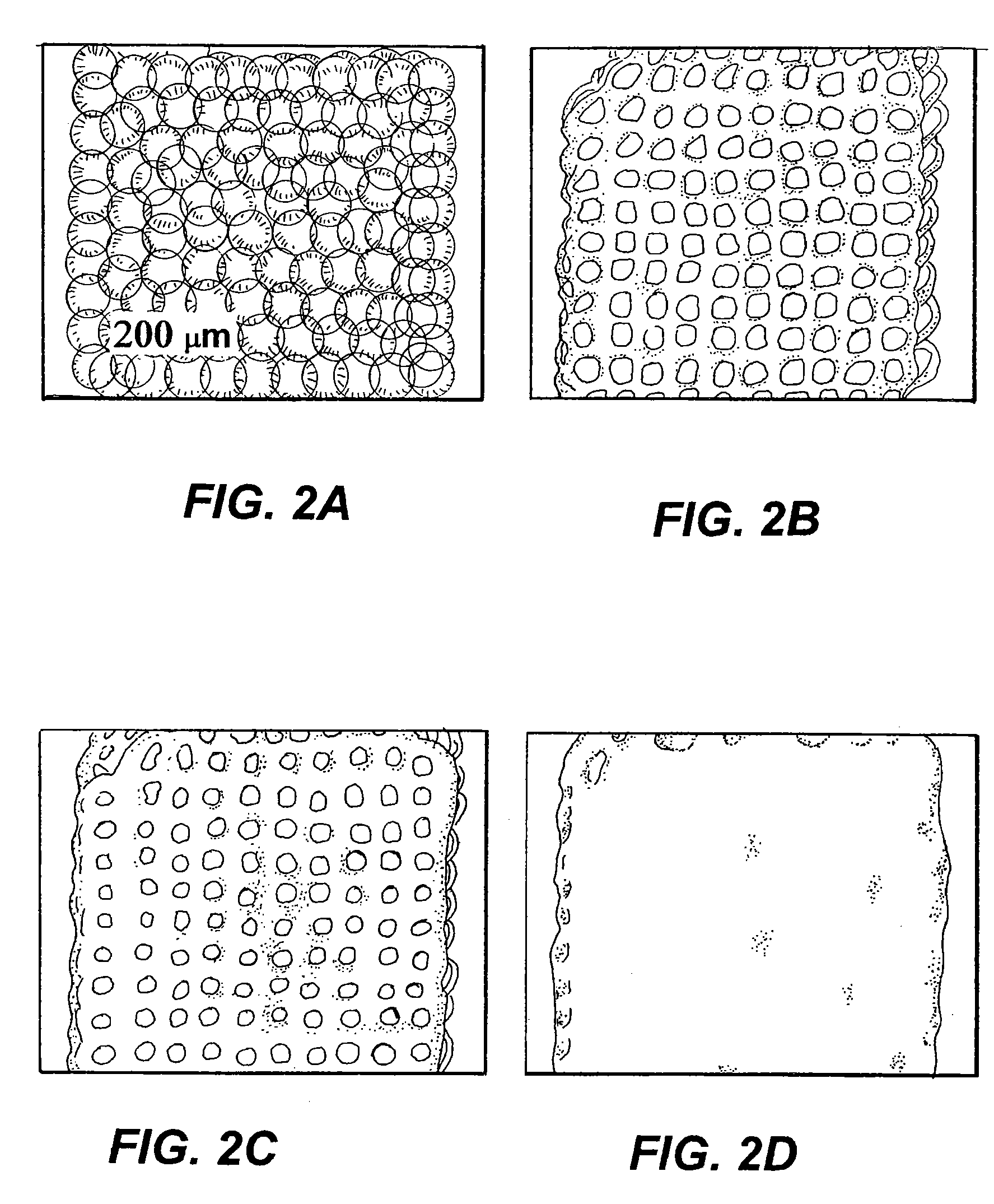Method and apparatus for forming structures of polymer nanobeads
a technology of nanobeads and printing structures, applied in photomechanical equipment, instruments, optical elements, etc., can solve the problems of large overhead costs, high cost of lithographic techniques, and often observed non-uniform polymer patterns, and achieve the effect of removing the surface roughness of printed polymer
- Summary
- Abstract
- Description
- Claims
- Application Information
AI Technical Summary
Benefits of technology
Problems solved by technology
Method used
Image
Examples
experiment 1
[0056
[0057]An experiment was devised to study the effectiveness of using inkjet printing method together with solvent vapor post-treatment to form smooth PMMA features. Namely, a smooth PMMA spacer and structure layers for MEMS surface micromachining application were devised by inkjet printing aqueous PMMA nanosphere suspensions and solvent annealing nanobead structures in Acetone.
[0058]The starting ink comprised of PMMA nanobead-water binary mixture and was prepared by stirring PMMA nanobeads (surface pretreated with surfactant to increase stability of the mixture) in de-ionized water for 2 hours. The final mixture was filtered through a 5 um polytetrafluoroethylene (PTFE) filter. Microscopic slides were used as substrate. Before use, the glass substrates were degreased by ultrasonification in 2% Micro-90 solution, de-ionized water and boiling isopropanol each for 5 minutes and then dried with nitrogen gas. Ink containing different PMMA loading concentrations were printed onto clea...
experiment 2
[0063
[0064]A MEMS structure was devised with the structural and sacrificial materials separately optimized. The two structures were combined together to complete the surface micromachining process. In theory, the process can consist of three stages: depositing and processing of the sacrificial material, depositing and processing of the structural material, and removal of the sacrificial material. In practice, however, the process is more complicated because of the difficulty with confining the amount of ink needed to obtain 1 μm thick structural film. The large volume would overcome the ink's surface tension and subsequently spill out to the surrounding area, resulting in a thinner and poorer defined film. To counteract this, external mechanisms are needed to keep the silver ink confined during the drying and densification steps.
[0065]In an embodiment of the disclosure, silver ink is confined by depositing secondary PMMA features. These secondary features act as barriers or dams ess...
PUM
| Property | Measurement | Unit |
|---|---|---|
| diameter | aaaaa | aaaaa |
| melting point | aaaaa | aaaaa |
| melting point | aaaaa | aaaaa |
Abstract
Description
Claims
Application Information
 Login to View More
Login to View More - R&D
- Intellectual Property
- Life Sciences
- Materials
- Tech Scout
- Unparalleled Data Quality
- Higher Quality Content
- 60% Fewer Hallucinations
Browse by: Latest US Patents, China's latest patents, Technical Efficacy Thesaurus, Application Domain, Technology Topic, Popular Technical Reports.
© 2025 PatSnap. All rights reserved.Legal|Privacy policy|Modern Slavery Act Transparency Statement|Sitemap|About US| Contact US: help@patsnap.com



